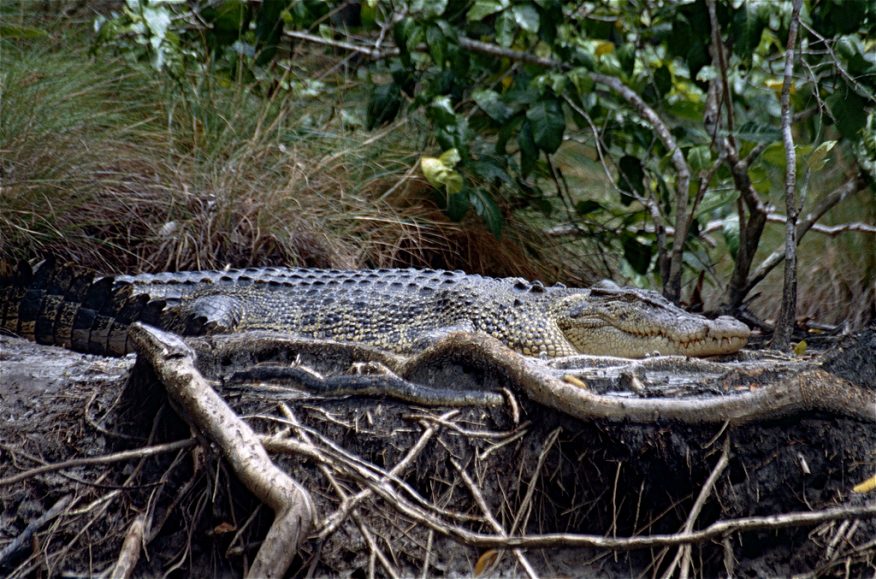Watch out for tree-climbing crocs
A new report finds more than a little truth to claims that crocodiles can ascend trees

Saltwater crocodiles, along with three other species, can slither up and along tree branches, a new study shows.
BERNARD DUPONT/FLICKR
Crocodiles lack feet or toes that are well-adapted for climbing. But that doesn’t keep them out of the trees. Indeed, how well many crocs climb trees is surprising scientists.
Although living crocs are considered largely aquatic animals, some paleontology reports had suggested ancient croc relatives might be able to climb trees. A new report finds that at least four species of living crocodiles can certainly ascend trees and more.
A trio of researchers from the United States, Australia and Africa studied reports on the behaviors of crocodiles. Some of those eyewitness reports came from the authors themselves. Their data largely come from croc sightings associated with research on unrelated topics.
These reptiles have been seen as much as 4 meters (13 feet) up a tree — and about 5 meters (16.5 feet) out along a branch. Vladimir Dinets of the University of Tennessee in Knoxville and his co-workers, report the new data January 25 in Herpetology Notes.
Adam Britton of Big Gecko in Howard Springs, Australia, was part of the research team. He personally witnessed local crocs attempting to climb a 1.8-meter (6-foot) chain-link fence. Smaller crocs prove the most agile climbers, the researchers find. Rarely were those in trees more than 1.5-meters long (although Britton has spied at least one 2-meter croc in a tree). Babies with strong claws can climb brick walls. (That apparently explains reports of them escaping croc “farms.”)
The idea that these reptiles might ascend shrubs and more isn’t that much of a stretch, the researchers note. “Climbing a steep hill or steep branch is mechanically similar” — assuming, that is, the branch is wide enough.
The scientists speculate that crocodiles use tree branches to sunbathe. Sunbathing helps the reptiles control their body temperature. Crocs usually were seen in trees only where there were few nearby ground sites on which they could have basked in the sun.
Climbing, the scientists note, also should give crocs a better view of potential prey. When they spy any, the crocs can quickly drop down into the water.
The new observations may even help scientists better understand how well extinct species of crocodiles behaved, the authors say.
Power Words
aquatic An adjective that refers to water.
extinct An adjective that describes a species for which there are no living members.
herpetology The biology of reptiles and amphibians. Scientists who work in this field are known as herpetologists.
paleontology The branch of science concerned with ancient, fossilized animals and plants.
prey Animal species eaten by others.
reptile Cold-blooded vertebrate animals, whose skin is covered with scales or horny plates. Snakes, turtles, lizards and alligators are all reptiles.







